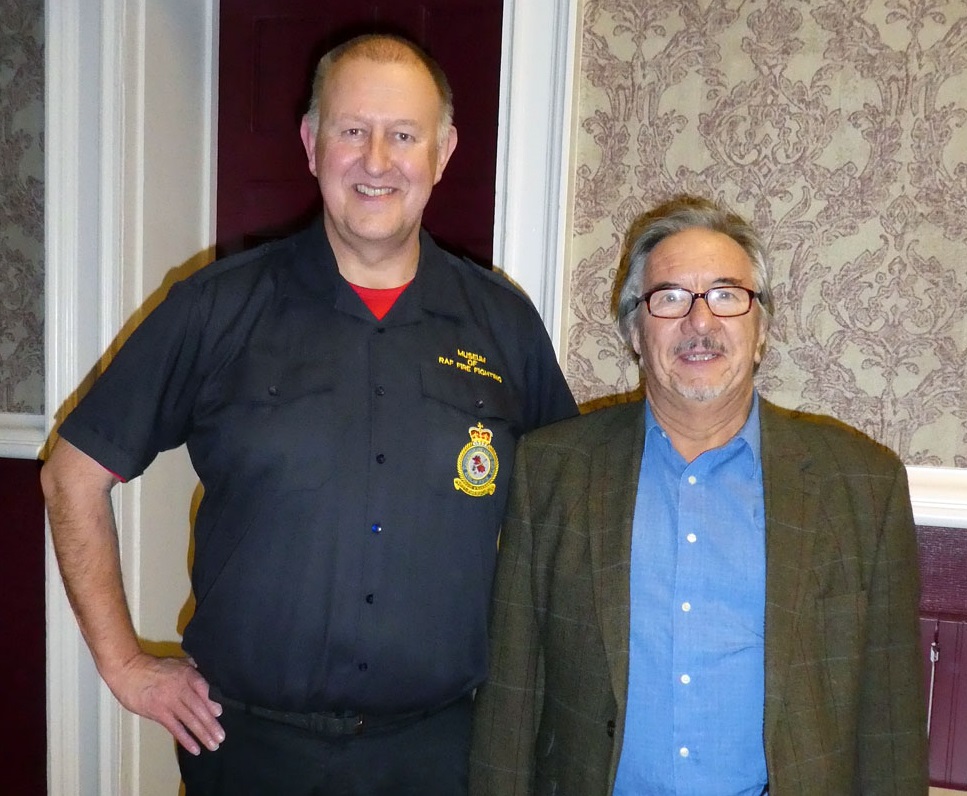Steven Shirley MBE gave an interesting talk (January 17th ) about the museum he founded which covers all Ministry of Defence (M.O.D) Fire Services, including Naval Air Command Fire Service, Royal Navy, Army, Defence Fire Service, Air Ministry Fire Service and also civilian fire brigades worldwide.
A serving Sergeant in the RAF Fire and Rescue Service, his passion for all things related to Fire fighting lead him to collect artefacts even during tours of duty abroad and eventually forming museums on Kent and Lincolnshire airbases - and collect volunteers to help maintain the sometime large items as well as tour shows and fundraising events as an attracting exhibit.
The museum tells the story of firefighting from the earliest days to modern times through an ever growing collection of fire-fighting related vehicles, equipment and artefacts – many of which Steven relocated to UK for abroad at his own expense. What man doesn’t manage to spend money on his hobby?
The talk began with a History of RAF Fire and Rescue; aircraft and warfare and of course the wood and canvas of early aircraft were excellent ingredients for fire! Early flying also resulted in accidents which didn’t necessarily lead to fire – but parachutes were not thought to be conducive to bravery. This combination of fire and accident lead to the first RAF fire and accident training at Lincolnshire’s Cranwell airbase in 1922 based on London Fire Brigade’s basic 4-week course. By WWII the aim was to save life if at all saveable – to fight another day. Asbestos-suited firefighter were in position at every take-off and landing with the tasks of pulling out airmen to reduce risk of death or injury and so increase chances of further flying hours, and to also put out aircraft fires to ensure as many salvageable parts as possible.
This illustrated and interesting talk really woke our interest on the subject and it was somewhat disappointing to hear of the difficulties Steven and his many volunteers are having in the finding of a new permanent home for the collection – not least because of the size of many of the exhibits and we all gave them our best wishes in their endeavours to keep it in Lincolnshire!
 Steve Shirley with Executive Committee member Pete Milsom
Steve Shirley with Executive Committee member Pete Milsom

